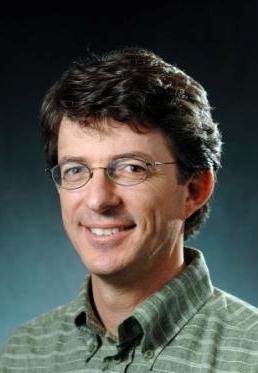武汉光电论坛第128期

报告题目:打破光学成像的衍射和多散射极限
Overcoming diffraction and multiple-scattering limitations in optical imaging
时 间:2017年6月13日10:00-12:00
地 点:光电国家实验室A101
报 告 人:Prof. Rafael Piestun,美国科罗拉多大学博尔德分校
邀 请 人:黄振立 教授
报告人简介:
拉斐尔•匹斯顿教授在以色列理工学院获得了电气工程硕士和博士学位,1998-2000年在斯坦福大学做博士后,2001年至今,在科罗拉多大学博尔德分校电气与计算机工程系和物理系开展研究,2010年升任正教授。匹斯顿教授是OSA Fellow,Optics and Photonics News期刊编委会成员,Applied Optics期刊副主编,NSF-IGERT项目首席研究员,NSF-STROBE 中心共同首席研究员。匹斯顿教授的研究兴趣包括:计算光学成像、超分辨成像、容积光子器件、散射光学和超快光学。
Biography:
Prof. Rafael Piestun received MSc. and Ph.D. degrees in Electrical Engineering from the Technion – Israel Institute of Technology. From 1998 to 2000 he was a researcher at Stanford University. Since 2001 he has been with the Department of Electrical and Computer Engineering and the Department of Physics at the University of Colorado – Boulder. Professor Piestun is a fellow of the Optical Society of America, was a Fulbright scholar, an Eshkol fellow, received a Honda Initiation Grant award, a Minerva award, a Provost Achievement Award, and El-Op and Gutwirth prizes. He served in the editorial committee of Optics and Photonics News and was associate editor for Applied Optics. He was the Director and Principal Investigator of the NSF-IGERT program in Computational Optical Sensing and Imaging at the University of Colorado and is co-Principal Investigator of the STROBE NSF Science and Technology Center. His areas of interest include computational optical imaging, superresolution microscopy, volumetric photonic devices, scattering optics, and ultrafast optics.
报告摘要:
光学计算成像旨在通过照明、光路、探测器以及重建算法等的共同努力来提高成像性能、实现新的功能。在这个报告里,我将讨论两个值得关注的计算成像例子:超越衍射极限的光学成像和复杂媒介成像。第一个例子也称为超分辨成像:研究者们将保持了一百三十多年的阿贝衍射极限打破,为纳米尺度的光学成像带来了前所未有的机会。将基于光激活和光转换蛋白的荧光成像技术和计算光学成像系统相结合,可以提供宽场单分子检测能力;而将三维点扩散函数工程和最优重建算法结合,则进一步提高了系统的三维分辨能力。第二个例子是关于透过强散射介质的聚焦和成像,是近年光学领域的研究热点。通过使用反馈系统和光学调制来实现波前控制,可以克服介质传播中的多散射效应。特别值得指出的是,将相位控制全息技术跟微机电技术相结合,可以实现散射介质状态的高速评估,从而能够在动态强散射介质样品上实现聚焦。我们最近的研究证明,利用光声效应,在保证光学分辨率的同时,对散射介质后的物体进行非侵入式成像。在报告的最后,我将简要介绍科罗拉多大学博尔德分校电气与计算机工程系的研究概况和研究生培养计划。
Abstract:
Optical computational imaging seeks enhanced performance and new functionality by the joint design of illumination, optics, detectors, and reconstruction algorithms. Two remarkable examples discussed here enable overcoming the diffraction limit and imaging through complex media. Abbe’s resolution limit has been overcome after more than 130 years enabling unprecedented opportunities for optical imaging at the nanoscale. Fluorescence imaging using photoactivatable or photoswitchable molecules within computational optical systems offers single molecule sensitivity within a wide field of view. The advent of three-dimensional point spread function engineering associated with optimal reconstruction algorithms provides a unique approach to further increase resolution in three dimensions. Focusing and imaging through strongly scattering media has also been accomplished recently in the optical regime. By using a feedback system and optical modulation, the resulting wavefronts overcome the effects of multiple scattering upon propagation through the medium. In particular, a phase-control holographic technique helps characterize scattering media at high-speed using micro-electro-mechanical technology, allowing focusing through a temporally dynamic, strongly scattering sample. Further, our recent investigations demonstrate the possibility of non-invasively imaging objects through a scattering medium using the photoacoustic effect while keeping the optical resolution.
武汉光电论坛是武汉光电国家实验室倾力打造的公益性高端学术系列讲座,共享光电知识盛宴,诚邀您的参与!
第100期起报告视频,访问http://www.wxbgt.com/,搜索“武汉光电论坛”字样
第71-99期报告视频,访问http://mooc.chaoxing.com/course/2018895.html
更早期视频参见 http://whof.wnlo.cn/